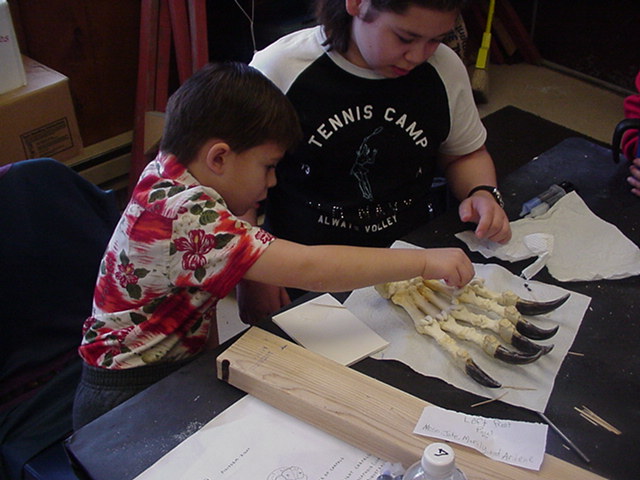
Welcome to Maker Ed’s “Growing up Making” community blog series that highlights how maker educators have been influenced by family and their community. By sharing stories of what inspires maker educators, we’re excited to showcase the impactful and multigenerational human history of making.
This post was written by Sheryl Sotelo, a long time teacher and Albert Einstein Fellow at the National Science Foundation from Homer, Alaska. Now retired from classroom teaching, Sheryl has shifted her energy to traveling around Alaska doing STEM and Maker Education Outreach, bringing hands-on learning through innovation and making to a variety of locations, often in rural communities.
The Bear Necessities of Making
By Sheryl Sotelo
My interest in creating and learning through hands-on tinkering probably comes from my grandfather. My grandfather, who grew up on a farm, possessed a mechanical ingenuity and an attitude that anything can be fixed. He was an archeologist who also felt a deep respect for the people he was studying; due to the destructive nature of archaeology, he felt he needed to document everything meticulously as he told their story. I grew up spending time with him on the digs and in the lab, always questioning and observing. It definitely made an impression upon me and sparked a life-long love for learning, assembling, and the stories that accompanied these experiences.
As a teacher, I brought this philosophy into and beyond the classroom walls. Part of my teaching career was spent in rural bush Alaska. My husband and I taught in the village of Gambell on St. Lawrence Island in the Bering Sea and in Unalakleet on the northwestern coast of Alaska. Our daughter’s school day was delivered half in Siberian Yupik and half in English. She was five at the time and we all learned a tremendous amount as visitors immersed in another culture in harsh living conditions. In communities like this, people have a long heritage of making, and when hands-on learning and making are combined with other curricular themes, students were engaged and motivated to learn in amazing new ways.
One of our largest projects was the articulation of a brown bear skeleton. This unfortunate 20-year-old, 1000 pound bear was hit by a truck near our small 25 student school. (My husband and I were the only two teachers). We lived in an area with a significant brown bear population and there were frequent and often avoidable human-bear interactions that often ended tragically. The students wanted to do something to help.
The K-8 students embarked on a year-long project. The vet in a neighboring town took x-rays so we would have a template of how the bones fit back together. We outfitted the students with trash bag dresses and safety pumpkin cutters and cleaned the bones.
We put up an electric fence around the barrel where we boiled the bones so that we wouldn’t attract other bears. After scraping and whitening the bones, we still couldn’t get the oil out of the bones until a helpful expert responded to our photo and post on the Internet. This man ended up traveling to our school and helped us put the bear back together in a beautiful display that is in the Cooper Landing Museum. The students created a photo record of the process and Bear Aware Brochures to hand out to visitors. It was truly an integrated curricular making project. The students and I were in uncharted territory and thanks to Lee Post (a.k.a Boneman), and members of the community who came out of the woodwork to help us, and the determination of all involved we had a magnificent final product to put in the community museum. We have gone on to make a traveling Bear in a Box Kit so that other students can also experience this unique learning!
The students created a photo record of the process and Bear Aware Brochures to hand out to visitors. It was truly an integrated curricular making project. The students and I were in uncharted territory and thanks to Lee Post (a.k.a Boneman), and members of the community who came out of the woodwork to help us, and the determination of all involved we had a magnificent final product to put in the community museum. We have gone on to make a traveling Bear in a Box Kit so that other students can also experience this unique learning!
